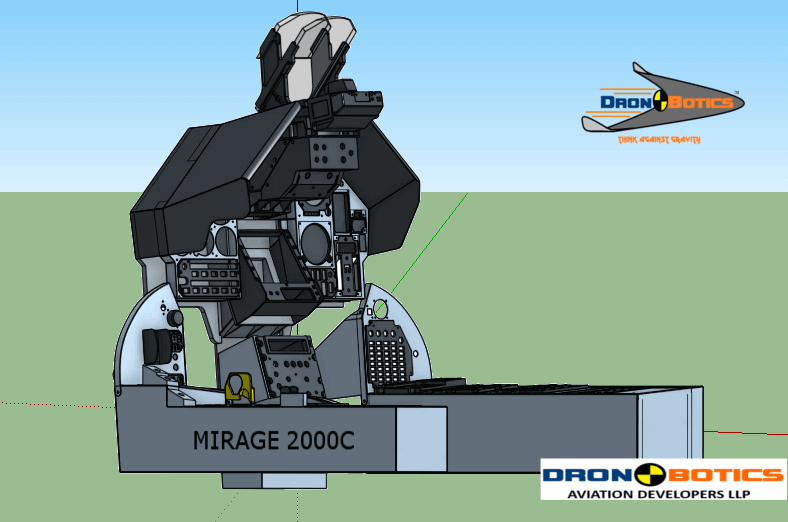Dronobotics, being in the field of Unmanned Systems, UAV Simulators and Civil Aviation, is now climbing further to design and manufacture replica cockpits and simulators for Military Aircrafts (using and implementing Open Source Information & Softwares available ).
We have experience of manufacturing Simulator Hardware of Boeing 737NG, Airbus A320 and Cessna 172 aircrafts.
USEFULNESS OF THE FLIGHT SIMULATORS IN THE MILITARY PILOT`S TRAINING
Their use is associated with familiarization of beginner pilots with the aircraft, its handling, navigation and basic missions. They are used for the selection and training of pilot candidates, advanced flight training, training of all flight phases, assessing the implementation of specific air missions, and crew training and coordination within the scope of MCC and CRM training.
Flight simulators play a significant role both in pilot training and in sustaining pilot currency. The safety level of modern general, commercial, public and Military aviation depends largely on simulation technologies, used not only for training purposes, but also in air accident investigations, studies of aircraft design or air traffic simulation and on a better understanding of the interactions present in the pilot-aircraft-mission environment system.
Conclusions drawn from the analysis of various studies suggest that the role of flight simulators increases with the growing complexity of modern aircraft systems, which means that simulator training is now an integral part of the processes of pilot training and professional development, or conducting the research studies related to adapting aircraft design to human capabilities and limitations. Ever increasing degree of fidelity of representing the pilot natural work environment by the simulator makes flight simulators an invaluable tool.
Thanks to the high definition graphics that our simulators offer you, fly like never before. You will feel like you’re on a real plane, not a simulator.
We are OEM of Flight Simulator panels i.e. we don`t assemble Simulator using panels from other comapnies, Our panels are Home-brewed and built keeping in mind the level of abuse the panels would have to tolerate in their life span.
Our Flight Simulation solutions would be most beneficial for Indian Customers as they would no longer have to be dependent on foreign companies for Product, Maintenance & Support.

Accurate Replica Of the M2000 Simulator with 70% funtional Inputs and Outputs
Highly detailed and accurate virtual and physical cockpit with switches, encoders, knobs, levers etc.
* Instructor`s Station
* True Scale
* 180 Degree FOV
Robust and High Quality Material For Minimum Maintenance
+ Full scale replica of Cockpit Panels
+ Accurate panel markings
+ Caution light panel
+ High quality input devices
+ Replica of joystick, throttle, switches, knobs etc
+ 180 degree high quality visuals
+ Various missions and tasks
+ Accurate flight manoeuvres
+ Air to air refuel practice task
+ Minimum Maintenance
And much more…
+ Aircraft : Get an overview of all important aircraft data and control parts like gear, flaps etc.
+ Position : Move your aircraft on an approach, to a runway takeoff point, or any other location.
+ Map: Real-time moving map shows current aircraft position, taxiways, gates, airways etc.
+ Flight Plan: Plan your flights manually or select from the system flight plan.
+ Weather Conditions: Define detailed weather conditions, enable real-time weather and set season, time and simulation rate.
+ Pushback: Control the aircraft pushback operations and set any needed pushback direction.
+ Fuel / Load : Set the current fuel amount and change the payload of the aircraft.
+ Statistics : Keep all important graphs on one view including detailed approach graphs.
And Much More...